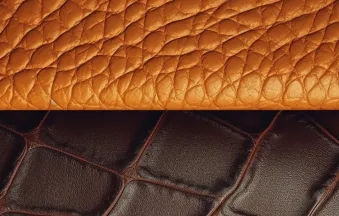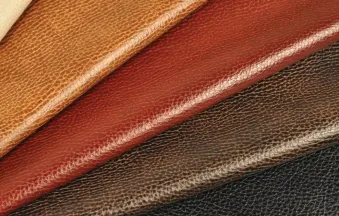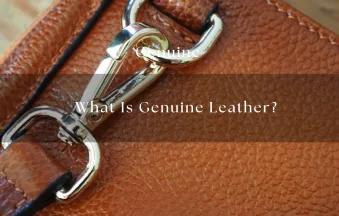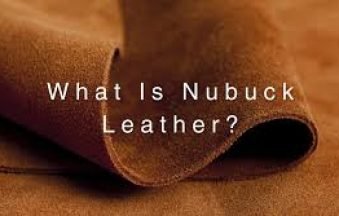Best Ultimate Guide to Choosing Leather Products 2025
Ultimate Guide to Choosing Leather — Leather is one of the most luxurious, durable, and versatile materials used in fashion, furniture, accessories, and a wide range of other products. Whether you’re shopping for a leather jacket, handbag, shoes, or a leather couch, understanding the different types of leather, their unique properties, and how to choose the right leather product is essential.
In this comprehensive guide, we’ll cover everything from identifying high-quality leather, exploring various leather finishes, and comparing leather grades, to learning the best leather care tips that keep your items looking their best for years.
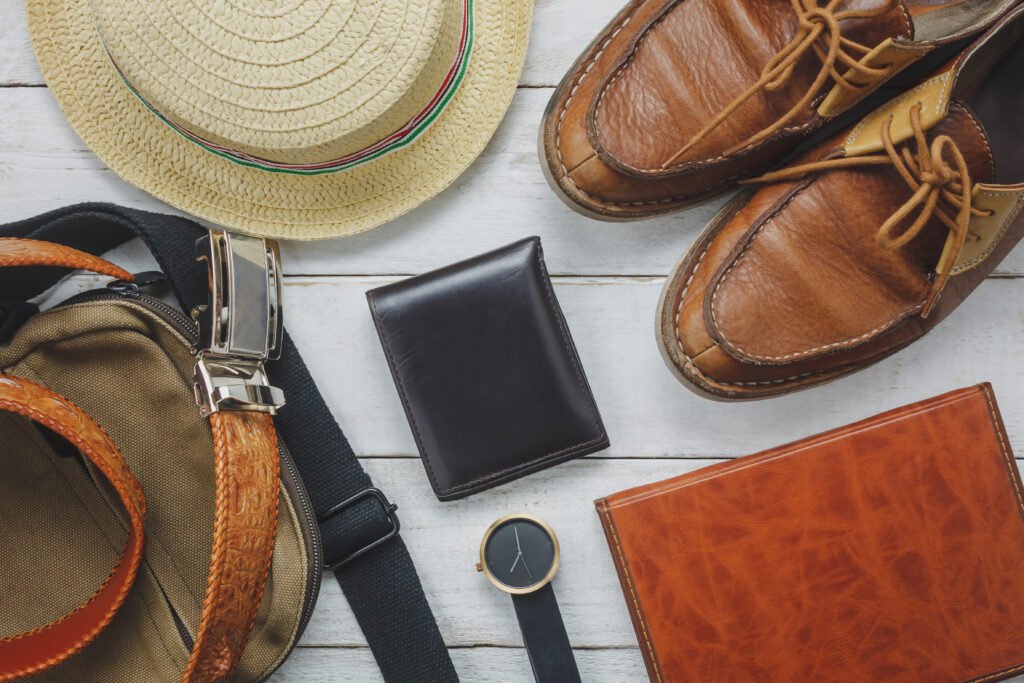
Table of Contents
ToggleWhat Is Leather?
Made from tanning animal hides or skins, most typically cows. Leather is a strong, flexible, and resilient material. One that resists deterioration, the tanning process preserves the hide and transforms it into a material suitable for use in cabinetry, accessories, apparel, and shoes. Because of its natural strength, softness, and exquisite aging over time, Leather has been worn for thousands of years. Each of the several forms of Leather—full-grain, top-grade, suede, and genuine Leather—has unique qualities and quality levels. Growing worries about animal welfare and environmental effects in recent years have prompted the creation of vegan or synthetic leathers—alternative materials derived from either plants or plastics.
Essential Leather Properties You Need to Know: Ultimate Guide
most important leather properties that define its quality.
- Resilience Against Water.
- Density
- Water absorption and desorption.
- Water Vapour Allowability.
- Insulation for Heat Plasticity.
- Aesthetics and surface pattern.
Types of Leather
Leather fabric comes in numerous forms. Knowing the variations among the several kinds and grades will assist you in grasping the characteristics of Leather.Here we discuss best ultimate guide to choosing leather.

1. Grain-Based (Quality Level) Leather Types
This type of classification is determined by the structure of the Leather’s outer & split hide layer:
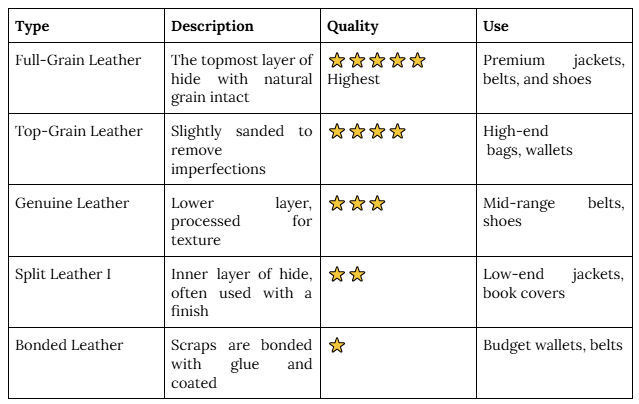
2. Finish-Based Leather Types
These kinds rely on the surface treatment the Leather receives
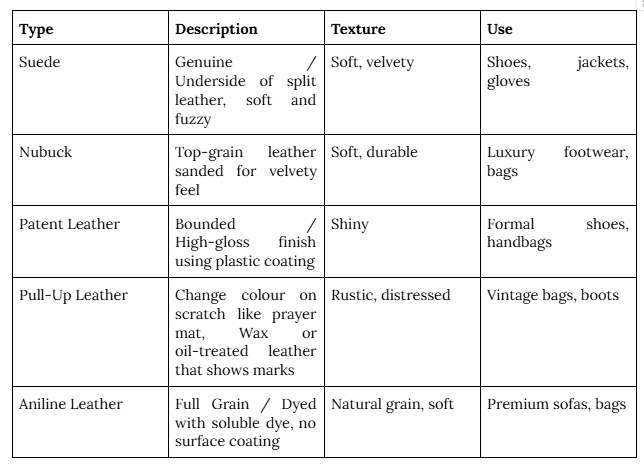
3. Animal-Based Leather Types
These classifications are based on the animal to which they are attributed:
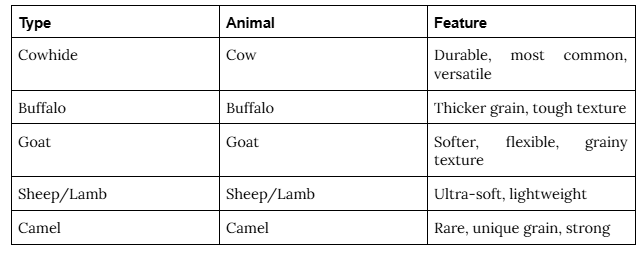
4. Tanning-Based Leather Types
It depends on the leather processing method:
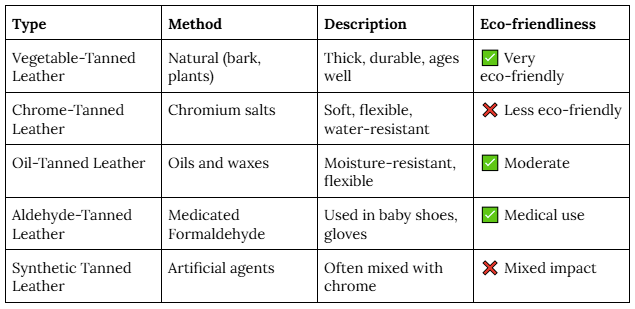
Pros And Cons Of Leather
Leather is a versatile material used in various products, from fashion to furniture. Here’s a breakdown of the pros and cons of leather:
Pros Of Leather
Durability: Leather is known for its strength and longevity. High-quality leather can last for years, often improving in appearance with age and use.
Aesthetic Appeal: Leather has a timeless, luxurious look. It often has a rich texture and appearance that adds sophistication and style to clothing, furniture, and accessories.
Comfort: Leather is breathable and molds to the shape of the user over time, which increases comfort in items like shoes, furniture, and clothing.
Natural Material: Leather is made from animal hides, which are a byproduct of the meat industry, making it a natural material. It’s biodegradable and doesn’t contain harmful synthetic chemicals.
Versatility: Leather can be used in a wide range of products, including clothing, shoes, bags, wallets, furniture, and even car interiors.
Value for Money: Although it’s often more expensive upfront, the durability of leather means it can offer long-term value, especially for items that see frequent use.
Cons Of Leather
Cost: Leather can be expensive, especially high-quality or designer products. The price can be a barrier for some people.
Maintenance: Leather requires regular maintenance, like cleaning, conditioning, and sometimes re-oiling, to keep it from drying out, cracking, or losing its luster.
Environmental Impact: Leather production can contribute to environmental harm, especially because of the chemicals used in tanning processes and the resource-intensive nature of raising livestock. However, alternatives like vegetable-tanned leather are more eco-friendly.
Ethical Concerns: Some people avoid leather because it’s derived from animals, raising ethical issues about animal rights. Vegan alternatives are available, but they may not have the same quality or feel.
Vulnerability to Scratches: Leather can be prone to scratches and scuffs, especially when it’s new. Over time, this can add to its worn-in look, but some people may find these imperfections undesirable.
Temperature Sensitivity: Leather can become hot and sticky in humid weather and cold in winter, making it less ideal in extreme climates unless treated properly.
Heavy: Leather can be heavier than synthetic materials, which might make it less appealing for certain uses, like lightweight jackets or bags.
Final Thoughts
Leather, with its timeless elegance and unmatched durability, remains a staple in both fashion and utility. Although it is a sign of luxury and excellence, the industry is changing in response to the growing trend towards sustainability, which motivates more environmentally friendly substitutes and approaches. Ultimately, Leather’s ability to age beautifully, its versatile use, and its enduring appeal make it a material that continues to hold a special place in our lives—if cared for properly, it can last for generations.
- FAQ (Frequently Asked Question)
What Is Leather?
Mostly from cows, goats, sheep, and buffalo, tanning animal hides results in a durable substance called leather.
What Are The Main Types Of Leather?
Common types include cowhide, buffalo, goat, sheep/lamb, and camel leather.
What Is Cowhide Leather Used For?
It’s strong and thick—ideal for jackets, shoes, furniture, and belts.
How Is Buffalo Leather Different?
It’s tougher with a coarse grain, used for rugged items like belts and boots.
Is Goat Leather Durable?
Yes, it’s soft, lightweight, and durable—perfect for gloves, bags, and jackets.
Why Is Lamb/Sheep Leather Popular?
It’s extremely soft and smooth, often used in luxury clothing and accessories.












